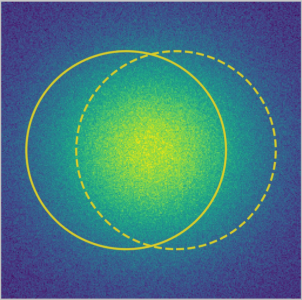Super-resolution via spatial mode demultiplexing and its applicability to observational astronomy

The time-honored Rayleigh criterion specifies the mini- mum separation between two incoherent optical sources using a linear imaging system. As a matter of fact, it is the size of the point spread function that determines the resolution: two points closer than the PSF width will be difficult to resolve due to the substantial overlap of their images.
Until recently, this Rayleigh criterion has been consid- ered as a fundamental limit. Resolution can only be improved either by reducing the wavelength or by building higher numerical-aperture optics, thereby making the PSF
narrower. Nonetheless, outstanding methods have been developed lately that can break the Rayleigh limit under special circumstances. Though promising, these techniques are involved and require careful control of the source, which is not always possible, especially in astronomical applications.
Despite being very intuitive, the common derivation of the Rayleigh limit is heuristic and it is deeply rooted in classical optical technology. Recently, inspired by ideas of quantum information, Tsang and coworkers have revisited this problem using the Fisher information and the associated Crame ́r-Rao lower bound (CRLB) to quantify how well the separation between two point sources can be estimated. When only the intensity at the image is measured (the basis of all the conventional techniques), the Fisher information falls to zero as the separation between the sources decreases and the CRLB diverges accordingly; this is known as the Rayleigh curse. However, when the Fisher information of the complete field is calculated, it stays constant and so does the CRLB, revealing that the Rayleigh limit is not essential to the problem.
These remarkable predictions prompted a series of experimental implementations and further generalizations, including the related question of source localization. All this previous work has focused on the estimation of the separation, taking for granted a highly sym- metric configuration with equally bright sources. Here, we approach the issue in a more realistic scenario, where the sources may have unequal intensities. This involves the simultaneous estimation of separation, centroid, and intensities. Typically, when estimating multiple parameters, there is a trade-off in how well different parameters may be estimated: when the estimation protocol is optimized from the point of view of one parameter, the precision with which the remaining ones can be estimated deteriorates.
Actually, we show that including intensity in the estimation problem does lead to a reduction in the information for unbalanced sources. However, the information available in an opti- mal measurement still surpasses that of a conventional direct imaging scheme by a significant margin at small separations. This suggests possible applications, for example, in observational astronomy, where sources typically have small angular separations and can have large differences in brightness.
